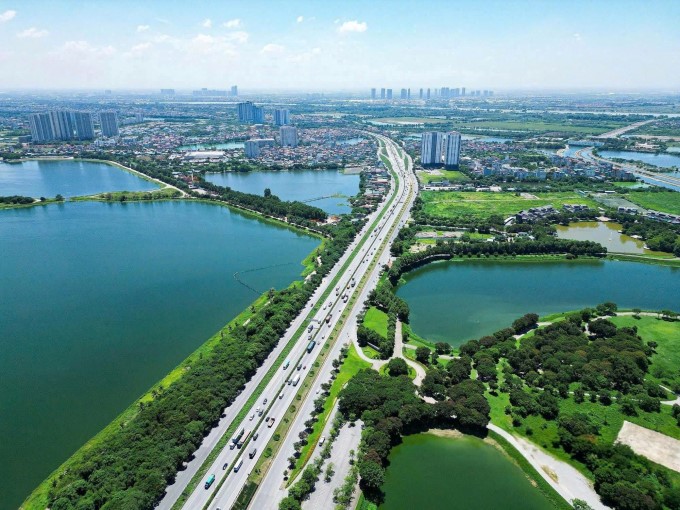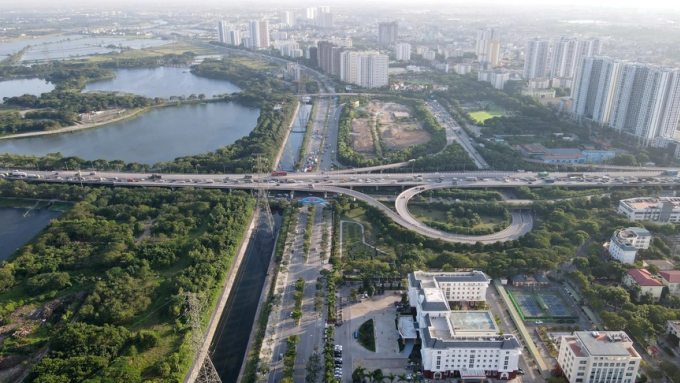Competitive pricing, infrastructure investment, and green living space are enhancing the appeal of real estate in Southern Hanoi.
According to the latest report by CBRE, Hanoi’s real estate market saw an increase in supply in 2024, mainly from major urban developments in Nam Tu Liem and Gia Lam. In Q4, the average primary price of apartments reached VND 72 million per square meter, up 36% year-on-year — the highest level in eight years.
The Western and Eastern areas of the capital continued to lead in supply in Q1/2025, with an average price of about VND 75 million per square meter, up 34% compared to the same period last year.
Meanwhile, real estate prices in Hoang Mai District — a representative area of the South — are only about two-thirds of those in the West and East, according to data from Batdongsan.com.vn. Thanks to its pricing advantage, Hoang Mai saw a surge in transactions and ranked among the top five areas with the highest liquidity in 2024, according to OneHousing statistics.

Southern Hanoi infrastructure
Hanoi is considering building a second airport in the southern region with a design capacity of 50 million passengers per year, according to the Adjusted General Planning Project to 2045, with a vision to 2065.
Additionally, the city has proposed developing a “Southern City” — an integrated urban hub for multimodal transportation, connecting air, national and urban railways, waterways (Red River), and key expressways such as Phap Van - Cau Gie and National Highway 5B.
Over the past decade, infrastructure in the South has been systematically developed, notably with Ring Road 3 — especially the elevated Linh Dam - Mai Dich section — which links East, West, South, and North. This route not only shortens travel time to the center but also serves as a strategic transport corridor.

Well-planned transportation infrastructure in Southern Hanoi.
The Phap Van - Cau Gie expressway and National Highway 1A position the area as a gateway connecting to neighboring provinces. The Giai Phong - Ngoc Hoi axis continues to channel traffic from the center to the South.
Coming soon, Ring Road 4 of the Capital Region will create a connection network among satellite towns and seven key Northern highways. Urban railway line No. 8 (Son Dong - Duong Xa) is expected to pass through Thanh Tri District, further linking the South with the inner city.
A major advantage of the South is its quality of life. According to Maison Office, Hoang Mai has a population density of about 13,400 people per square kilometer, while Thanh Tri has over 4,500 — significantly lower than Hai Ba Trung, Dong Da, and Thanh Xuan districts.
The area also boasts green spaces like Linh Dam Lake, Yen So Lake, and the 323-hectare Yen So Park. Many new urban areas here incorporate parks and small recreational zones, fostering a clean and healthy living environment.
Southern Hanoi has also become a highlight with increasingly complete utility infrastructure. This area is home to major hospitals such as Bach Mai, Viet Phap (French-Vietnamese Hospital), the National ENT Hospital, and leading universities like Hanoi University of Science and Technology, National Economics University, and University of Civil Engineering.
In recent years, some developers have chosen the South for new projects, anticipating demand from residents relocating from the inner city. According to experts, the growing preference for green living spaces will be a driving force for the area’s real estate market.


 Zalo
Zalo Webchat
Webchat